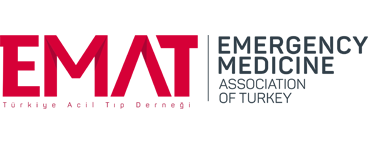Pediatric simple triage score: A simplified approach for triaging pediatric patients with fever in the emergency department
Arshad Ali Vadakkeveedan1 , Venugopalan Poovathumparambil2
, Venugopalan Poovathumparambil2 , Rohan Thomas Senapathy1
, Rohan Thomas Senapathy1 , Ijas Muhammed Shaji1
, Ijas Muhammed Shaji1 , Ridha Padiyath3
, Ridha Padiyath3 , Ajith Kumar Jayachandran1
, Ajith Kumar Jayachandran1 , Roshan P. Kunheenkutty1
, Roshan P. Kunheenkutty1 , Nadeer Savad1
, Nadeer Savad1
1Department of Emergency Medicine, Travancore Medical College Hospital, Kollam, Kerala, India
2Department of Emergency Medicine, Aster MIMS Hospital, Kozhikode, Kerala, India
3Department of Dermatology, Travancore Medical College Hospital, Kollam, Kerala, India
Keywords: Emergency department, fever, pediatric, triage
Abstract
INTRODUCTION: The initial 24 h period following admission to a hospital holds profound significance for pediatric patients, representing a critical window where proactive interventions can substantially influence outcomes. We devised a simple triage system, pediatric simple triage score (PSTS), to see whether rapid triage of sick pediatric patients with fever can be done using the new triage system in the emergency department (ED) to predict hospital admission.
METHODS: This was a prospective observational study, conducted at the department of emergency medicine of a tertiary care teaching hospital in southern India. A prospective cohort of children presenting to the ED underwent assessment for temperature, oxygen saturation (SpO2), pulse rate, respiratory rate, sensorium, and hydration status. Sensorium was evaluated based on criteria such as poor cry, poor feeding, or decreased activity, while hydration status was assessed using indicators such as decreased urine output, dry mucous membranes, or reduced skin turgor. Subsequently, participants were triaged according to the National Institute for Health and Care Excellence (NICE) guidelines. We then monitored the admission outcomes, whether they were admitted to the intensive care unit (ICU), the ward, or discharged, based on clinical decisions made by the pediatric consultant.
RESULTS: In this study involving 350 participants, the mean age was found to be 2.72 years (standard deviation [SD] ±1.78), with a range from 29 days to 5 years. The study population consisted of 60.86% males with a total of 213 patients. Examining vital signs, the mean heart rate was 135.07 beats/ min (SD ± 21.58), with a range of 82–200 beats/min. The mean temperature was 37.57°C (SD ± 0.52), with values ranging from 36.80°C to 39.20°C. The mean respiratory rate was 36.28 breaths/ min (SD ± 14.06), varying from 20 to 90 breaths/min. SpO2 averaged at 96.31% (SD ± 3.64), with values ranging between 70% and 100%. Abnormal sensorium was observed in 10.86% of the participants, while seizures were reported in 2.57%. Dehydration was present in 3.71% of the study population. Among the study participants, 24.57% were admitted to the ICU, 30.57% to the ward, and 44.86% were treated as outpatients. According to PSTS, 192 (54.86%) participants were triaged to green, 119 (34%) participants to yellow, and 39 (11.14%) participants to red. The PSTS demonstrated a sensitivity of 59.59% and a specificity of 72.61% in predicting hospital admission. The NICE triage system had a sensitivity of 80.31%, in predicting the admission (either ward/ICU), with a specificity of 72.61%.
CONCLUSION: The PSTS demonstrated fair agreement with the NICE; it exhibited lower sensitivity and positive predictive value. However, the simplicity of the new system renders it potentially useful, especially in resource limited settings.
How to cite this article: Vadakkeveedan AA, Poovathumparambil V, Senapathy RT, Shaji IM, Padiyath R, Jayachandran AK, et al. Pediatric simple triage score: A simplified approach for triaging pediatric patients with fever in the emergency department. Turk J Emerg Med 2025;25:25-31.
The study has been approved by the Institutional Ethics Committee Malabar Institute of Medical Sciences Ltd. (MIMS) and the corresponding number is “IEC Reg. No. ECR/301/inst/KL/2013” dated: June 20, 2017.
AAV: Conceptualization (lead); Methodology (lead); Software and investigation (lead); Formal Analysis; Writing - original draft (lead); Project administration. VP: Methodology (lead); Investigation (support); Data Curation; Writing - original draft (lead); Supervision, Visualization, Writing - review and editing; RTS: Writing - original draft (support); Supervision, Writing - review and editing; IMS: Software and investigation (support); Visualization; Resources (support); Writing - original draft (lead); Writing - review and editing. RP: Writing- original draft (support); Supervision, Writing - review and editing; AKJ: Writing - original draft (support); Supervision, Writing - review and editing; RPK: Writing - original draft (support); Supervision, Writing - review and editing; NS: Writing - original draft (support); Supervision, Writing review and editing; AAV did the overall supervision of the whole study and all authors made a substantial contribution. All authors have read and agreed to the content of the final manuscript. [AAV: Arshad Ali Vadakkeveedan, VP: Venugopalan Poovathumparambil, RTS: Rohan Thomas Senapathy IMS: Ijas Muhammed Shaji, RP: Ridha Padiyath, AKJ: Ajith Kumar Jayachandran, RPK: Roshan P Kunheenkutty, NS: Nadeer Savad].
None Declared.
None.

